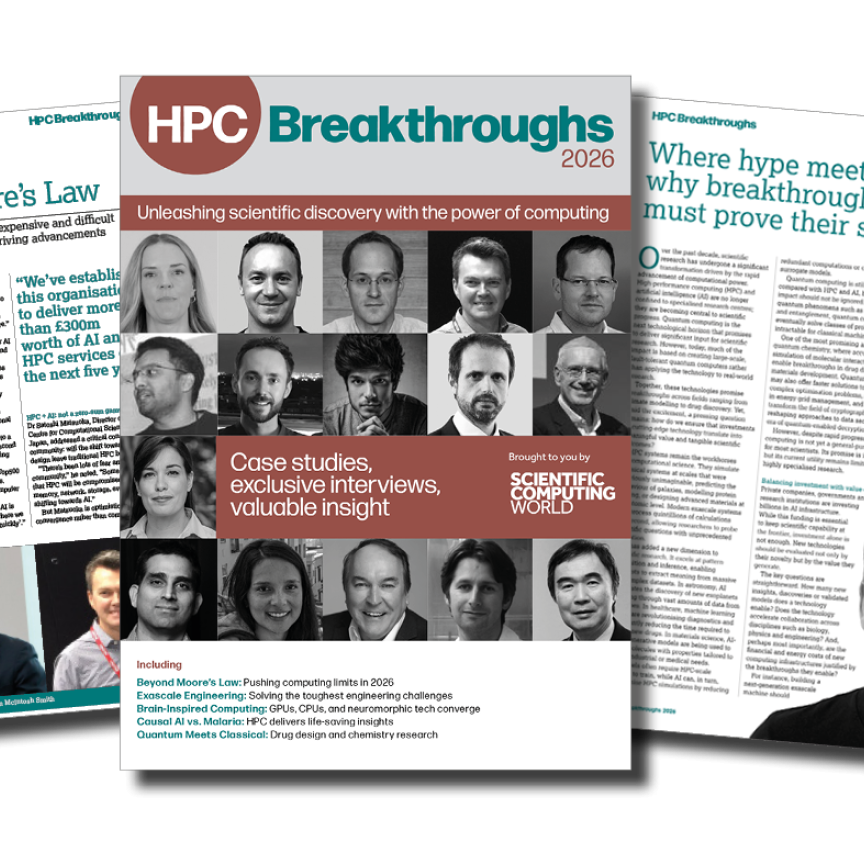Scientists are using HPC to create accurate models of osteoporotic bones to help doctors diagnose the disease.
A team at the IBM Zurich Research Laboratory is simulating how bones that are affected by osteoporosis behave when pressure is applied to that diseased area, and hope to be able to simulate fractures within the next few years using a novel technique. Costa Bekas, a research staff member at the Zurich Research Laboratory, said: 'We are involved in using algorithms that involve massive scale ups. The goal is to produce an accurate tool for predicting how osteoporotic bones react to disases and we would eventually like to simulate fractures.'
The bone is made up of two layers: a tough outer cornical layer and the inner trabular layer, which is sponge-like and forms the main structure inside most bones. Osteoporosis occurs in this spongy inner layer that breaks at the slightest touch and is very difficult to fix and, according to figures from the World Health Organisation, the risk of an osteoporotic fracture during a person's lifetime is around 40 per cent for women and 13 per cent for men.
Qualitative Computer Tomography techniques are currently used to image the diseased bone and advances in this technology have made it possible to image bones at a sub-micron level. These images are then analysed by a doctor for signs of osteroporosis, but this is a hit-or-miss approach to such a diagnosis, according to Bekas, who added: 'At the moment doctors have an image and they just look at it - this is a highly empirical process and we need something that is accurate and can use mathematical modelling of human bone that enables the study of its strength and characteristics under numerous load profiles.'
So the Zurich team has used these images and simulates what will happen when a diseased bone is subjected to varying degrees of pressure. One of the major challenges from an HPC perspective is to model on the small scale, as Bekas said: 'Unless we can accurately model the microstructures we see nothing but this will involve processing billions of degrees of freedom.'
The team is currently using high-res QCD images of a live human wrist to create a finite element model of the bone structure. The wrist is used as it is usually one of the first areas of the body to be affected by osteoporosis. Speaking at the ISC 08 conference, Bekas added: 'This gives us a map of effective strength and an idea of the deformation of the bone.'
The team then simulates what will happen to the wrist as it is subjected to increasing pressure to the point where it is about to fracture. This is done using a version of Hooke's law, which uses partial differential equations to simulate the bone via matrices.
The team is facing a number of challenges when trying to simulate this situation. Firstly, the intricate morphology of the spongy bone structure requires it to be broken down into hundreds of millions of cubes to be simulated. Secondly, there are billions of degrees of freedom that need to be dealt with and, finally, the complexity of the problem increases to the power of three with every unknown.
Such a complex simulation would, naturally, use up a huge amount of computing power, so Bekas is using iterative techniques to try and bring down the complexity and parallel deployment to get the most out of the power available.
The parallel deployment method involves using load balancing to distribute the non-zeros of the matrix over the processors as evenly as possible. Another goal for the team is to ensure the processors share as few rows of the matrix as possible, which minimises inter-processor communication. Areas of the bone are partitioned using a software called ParMETIS that, according to Bekas is 'a more sophisticated offering as there are fewer interfaces so the processing time is decreased'.
The method has been a success and Bekas has demonstrated the feasability of micro-finite element analysis for a strength study of osteroporotic bones. The next step is to create a non-linear solver for fracture analysis and modelling, which requires new numerical techniques and algorithms. Bekas is confident this will happen soon and added: 'We want to be able to simulate fractures in the next few years.'

